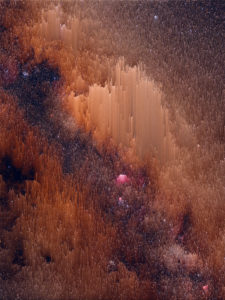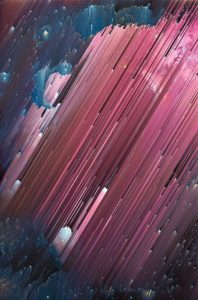Adam Ferriss is a digital artist based in Los Angeles; he studied photography at the Maryland Institute College of Art where he became interested in using code to manipulate his photos. Later he received his MFA from UCLA. He experiments with RGB tricolor separation, shader programs, and pixel sorting algorithms. When Ferriss first started to manipulate photos, he took black and white photos and added red, green, and blue filters. He started incorporating code by exploring and experimenting in processing; he studied using Daniel Shiffman’s Nature of Code and Learning Processing.
Ferriss creates these psychedelic and optical illusions using photoshop, Adobe After Effects, and putting the photo through an algorithm to distort the pixels. The technical tools he frequently uses are: openFrameworks, GLSL, and Javascript. In an interview with Software Development Times, Ferris explains how he alters the color and movement of the pixels: “I work a lot with noise functions, Perlin noise, or simplex noise. They’re ways to generate pseudo-randomness in color, like shaping form. It generates a seed pixel, and from that one seed pixel it looks out at its neighbors, and continuously expands so its neighbors will start expanding. It’s essentially like you’re growing an image or a crystal in the way it clumps itself together and generatively expands.”
In interviews, Ferriss talks about how he takes inspiration from around him. He finds code that is already out there (he describes searching around GitHub) and then tinkering with it. He changes variables and runs the code over and over again until he sees something he likes.
Before earning his MFA from UCLA, Ferriss ran the photo lab at Otis College of Art and Design.He has also worked with companies such as the New York Times, Google, and Nike and has been featured on Wired, the Creators Project, Fast Company and many others.


I think my favorite pieces are from his collection called “500 Years Away”; the visuals are futuristic and parallel what I imagine space to look like.
Ferris also explores interactive art; on his website he has shared pieces where the user can control what happens. For example: https://adamferriss.com/seeds/
His tumblr His Vimeo


